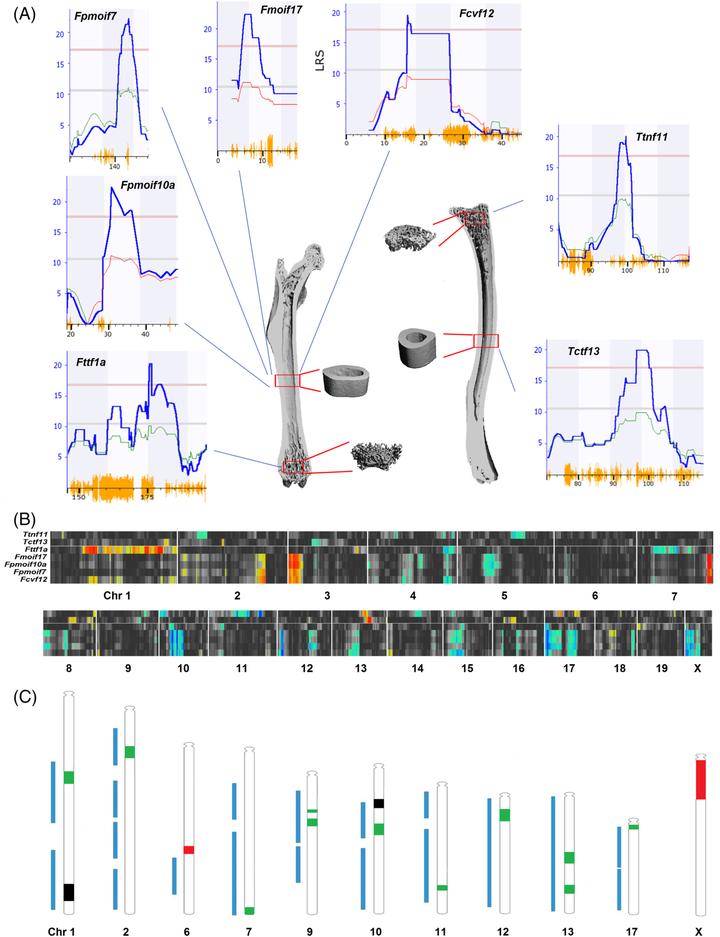Genetic Dissection of Femoral and Tibial Microarchitecture

Abstract
Our understanding of the genetic control of bone strength has relied mainly on estimates of bone mineral density. Here we have mapped genetic factors that influence femoral and tibial microarchitecture using high-resolution x-ray computed tomography (8-μm isotropic voxels) across a family of 61 BXD strains of mice, roughly 10 isogenic cases per strain and balanced by sex. We computed heritabilities for 25 cortical and trabecular traits. Males and females have well-matched heritabilities, ranging from 0.25 to 0.75. We mapped 16 genetic loci most of which were detected only in females. There is also a bias in favor of loci that control cortical rather than trabecular bone. To evaluate candidate genes, we combined well-established gene ontologies with bone transcriptome data to compute bone-enrichment scores for all protein-coding genes. We aligned candidates with those of human genome-wide association studies. A subset of 50 strong candidates fell into three categories: (1) experimentally validated genes already known to modulate bone function (Adamts4, Ddr2, Darc, Adam12, Fkbp10, E2f6, Adam17, Grem2, Ifi204); (2) candidates without any experimentally validated function in bone (eg, Greb1, Ifi202b), but linked to skeletal phenotypes in human cohorts; and (3) candidates that have high bone-enrichment scores, but for which there is not yet any functional link to bone biology or skeletal system disease (including Ifi202b, Ly9, Ifi205, Mgmt, F2rl1, Iqgap2). Our results highlight contrasting genetic architecture between sexes and among major bone compartments. The alignment of murine and human data facilitates function analysis and should prove of value for preclinical testing of molecular control of bone structure.